Regional economy. Рубрика в журнале - Economic and Social Changes: Facts, Trends, Forecast
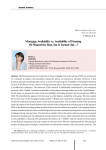
Mortgage availability vs. availability of housing. We wanted the best, but it turned out...?
Статья научная
The Russian government's decision to lower mortgage rates in the spring of 2020 was announced as a measure to support the population during the spread of coronavirus infection. However, is this decision optimal and strategically correct in terms of improving the availability of housing for Russian citizens in the future? In the context of rising real estate prices, this issue in domestic economic research is insufficiently addressed. The relevance of the research is additionally conditioned by the evaluation necessity of the “bubble” formation probability on the primary housing market due to the “double boom”. In this paper, we present the study results of availability of housing dynamics for the period from 2000 to 2020. We identified the regions with the lowest and the highest availability of housing. We have studied the current state of the mortgage lending market in Russia and constructed a multiple regression factor model for residential real estate prices on the new housing market. The scientific novelty of the presented research consists in the determination of the reasons of the rash growth of real estate prices in the spring of 2020 on the Russian housing market and their forecast for the medium term period. It is recognized that in modern conditions the key factor contributing to the increase in primary housing prices is the reduction in mortgage interest rates on loans. The decision to sharply reduce the interest rate has caused an increased demand for housing and the subsequent excessive growth of prices, which ultimately did not contribute to the availability of housing. We substantiate the absence of a “bubble” and the reasons for lower prices on the Russian residential real estate market in the short term. We have implemented the forecasting of primary housing prices through a combination of traditional economic tools and neural networks. The persistence of significant price levels on the Russian market of new buildings in the medium term can be explained by the negative trends in the development of key influencing factors and other macroeconomic indicators characterizing the socio-economic development of the country. We have proposed managerial measures aimed at expanding the availability of housing for Russian citizens.
Бесплатно
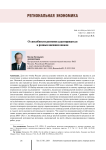
On the ability of regions to adapt to various external shocks
Статья научная
In order for Russia to successfully respond to current challenges and to prepare for new challenges, it is important to analyze the contribution of regions to solving these tasks. The basis for assessing the sustainability of the Russian regions' economies can be their reaction to the shocks they have already experienced. The article examines economic development of the regions in the context of the 2009 crisis caused by the Great Recession and the 2020 crisis associated with the COVID-19 pandemic. The choice of these very different crises was determined by the aim of the study, which is to find out how universal the ability of regions to adapt to various external shocks is. The sustainability of a region is assessed by comparing its development indicators and data on the economy as a whole. The comparison is based on the dynamics of gross product and changes in innovation activity over periods that overlap the years of business downturn. Groups of regions with different levels of stability are identified and several characteristics of these groups are given. In contrast to the point of view available in the literature, it is shown that a very successful overcoming of one crisis by a region often cannot be repeated in a crisis of another origin. We identify a group of regions, which we can characterize as possessing a relatively universal dynamic stability in the sense of gross regional product growth. As for innovation sustainability, only some of the regions were able to maintain it in different types of crises. In general, for the period from 2008 to 2021, no connection was found between the growth of gross regional product and the regions' innovative activity estimated by the increase in the volume of innovative goods, works, and services.
Бесплатно
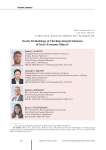
On the methodology of checking integral estimates of socio-economic objects
Статья научная
A reliable and high-quality assessment of scientific, technological, and innovative development of territories helps to define socio-economic conditions and forecast economic growth dynamics of a given subject. The usage of integral indicators is among the most popular approaches toward assessing science, innovative activity, and other socio-economic objects. However, since a collective synthetic category is estimated, accuracy of this metric’s characterization of an intangible subject is uncertain. In this regard, issues related to the development of methodology for checking aforementioned provisions are relevant. The purpose of the study is to define the reliability of artificially derived integral complex estimates that in turn describe various socio-economic processes and phenomena. Scientific novelty of the research is to develop an approach to determining the reliability of integral metrics based on mathematical statistical tools. We attempted to determine the quality of artificially derived integrated estimates that, according to their creators, characterize various manifestations of science, innovation, and technology. We applied corresponding methods (variance, correlation, and regression analysis) using the Innovation Development Index of RF constituent entities and assessment of territories’ scientific and technological potential. The results obtained are of practical importance in relation to the evaluation practices of the scientific and innovative sphere carried out in the Russian economy. The theoretical significance of the study is characterized by the development of an approach that can be applied to other socio-economic objects. We conclude that integral assessments become an extremely subjective tool when applied to humanitarian areas. They can be used correctly if there is a confirmed connection with the indicators: integral assessments should influence them or have a strong response from them.
Бесплатно
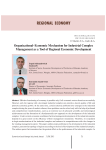
Статья научная
Effective functioning of economy is possible only if all economic sectors function successfully. However, only the regions with a developed industrial complex can provide a decent quality of life and promote economic growth. At the same time, certain systemic problems have emerged in the industrial complex during the years of market reforms; these problems can be solved only with the help of profound and comprehensive transformations, such as an extensive use of advanced scientific and technological achievements and the formation of a fundamentally new approach to the development of the industrial complex. Under current economic conditions the functioning and development of the industrial complex depends to a great extent on the efficiency of their management mechanism. Therefore, it is expedient to begin modernization of the industrial complex and enhance its competitiveness with the changes in the existing management system. The paper outlines main problems in the development of the industrial complex, presents the typology of regions according to the level of development of the industrial complex...
Бесплатно
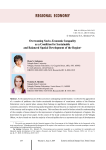
Статья научная
As the spatial structure of the economy is undergoing transformation, we observe the aggravation of a number of problems that hinder sustainable development of constituent entities of the Russian Federation; and a special place among them belongs to significant intraregional differences in socio-economic parameters. Overcoming spatial disparities should become an imperative for the development of the country and its regions in the long term. This confirms the need for further scientific understanding of the complex of issues related to the improvement of regulation of spatial development of regions; this determines the goal of our paper. In the course of the study conducted on the materials of the Vologda Oblast, we have found out that the majority of municipalities have an asymmetrical type of development with increasing differences between the areas of concentration of economic activity near major cities in the region and the rest of the territory; this indicates the process of compression of space. The paper proposes an approach to state regulation of spatial development of the region, based on its representation, on the one hand, as a complex system, and on the other hand, as a socio-economic area. Scientific novelty of the approach lies in the fact that it is based on principles and methods that help promote the development and self-development of municipalities, take into account their features and patterns of functioning, and orient municipalities toward solving strategic problems. The study is based on methods such as system analysis and system synthesis, generalization, comparison, and comparative analysis. The results of the study can be used in the activities of regional authorities and local government. Theoretical generalizations contained in the article can be used as materials for scientific discussion.
Бесплатно
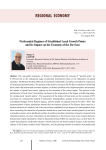
Статья научная
The successful experience of France in implementing the concept of “growth poles” byF. Perroux led to the widespread usage of polarized development ideas in the elaboration of spatial strategies. The Russian Far East (FE) has accumulated considerable, and rather contradictory, experience of creating local growth points. The purpose of the study is to analyze the Far East’s experience of forming local zones with preferential economic regimes, to identify problems of its implementation, and to assess the impact of special local zones’ regimes on the economy of the macro-region. The analysis of the performance of local zones’ functioning was based on the assessment of the degree of achieving targets for creating local “growth points”. The assessment of the impact of local zones on the economy of FE was based on a comparative analysis of enterprises’ demographics, changes in the revenue structure of consolidated budgets of Far Eastern regions, and the quality of regional finances for 2013-2019. The implementation of these approaches showed that the business climate of Far Eastern local zones has a positive nature for its residents, but it has not yet been established; in the absence of a clear position of the state concerning the formation of propulsive industries in most local areas, anchor projects do not have a propulsive nature, and a significant number of small and medium enterprises is loosely connected with enterprises-leaders of zones. Orientation of specialization of Far Eastern local zones toward domestic demand and import substitution, which is objectively formed within the sanctions war, can slow down its export specialization; preferential climate of local zones has no obvious positive impact on the business climate of Far Eastern entities of the Federation, and the growing number of residents with preferential business conditions in local zones dissonant with demographics of FE enterprises. There is a deterioration of the quality of regional finances and the decrease of the taxable mass of profits. It implies the reduction of the number of profitable enterprises in FE as the result of the economic situation deterioration and the introduction of a preferential tax regime in region’s local areas.
Бесплатно
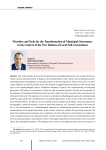
Статья научная
One of the priority areas in the development of municipal formations in the context of the new reform of local self-government in Russia is the transformation of the system of local self-government, including further consolidation of territorial systems at the municipal level. These issues are to a certain extent reflected in scientific studies and in the research on agglomeration processes as well. At the same time, in the methodological aspect, insufficient attention is paid to the transformation of municipal governance. We believe it is necessary to focus not only on general patterns, but also on the specifics of development of municipal formations located around a large city; these provisions have determined the relevance of the work. The purpose of our study is to develop a methodological approach to substantiating priorities and tools for the transformation of municipal governance in the context of the new reform of local self-government. To this end, we use methods such as analysis and synthesis, structural, functional, monographic, statistical methods, review of municipal practices, etc. Scientific novelty of the research lies in the development of a methodological approach to substantiating priorities and tools for the transformation of municipal governance in the context of the new reform of local self-government. We show that transformation methods such as unification of rural settlements and transition to a single-level system of organization of local self-government, transfer of powers from the level of rural settlement to the level of municipal district, development of inter-municipal cooperation provide positive socio-economic effects for municipal formations. The findings of our work can be replicated and used in the practice of managing the development of municipal formations in Russia; they can also serve as a basis for further research on this topic concerning the improvement of the management system at the local level.
Бесплатно
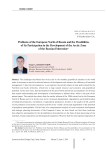
Статья научная
The challenges that Russia has to face due to the unstable geopolitical situation in the world make it necessary to search for internal sources of development and enhance the efficiency of territorial management. Under the circumstances, in our opinion, the priority object of state policy should be the Northern and Arctic territories, which have a huge natural resource and economic and geopolitical potential. At the same time, their development in the post-Soviet period has accumulated a set of issues that require understanding and development of mechanisms to address them, which is the goal of the present paper. The analysis has shown that the market reforms of the 1990s carried out in the European North of Russia and in its Arctic zone led to increased depopulation, degradation and primitivization of industrial production, curtailment of agricultural production, decline in the quality of life, growth of concentration of economic and social activity in the “nodal” points and degradation of the potential of peripheral municipalities...
Бесплатно
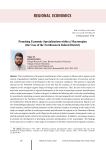
Статья научная
The intensification of structural transformation of the economy in Russia and its regions in the context of geopolitical instability requires searching for the most promising types of economic activity that could become drivers of development in the new economic conditions. This premise is especially relevant for the Northwest of Russia due to the fact that the economy in this macroregion has been subjected to the strongest negative impact of foreign trade restrictions. Thus, the aim of our study is to determine sectoral priorities of regional development in the form of promising economic specializations within a single macroregion. To achieve the goal, we address the following tasks: to develop a methodology for searching for promising economic specializations at the macroregional level; identify existing sectoral specializations in the Northwest of Russia; outline the profile of promising economic specializations in the Northwestern Federal District, taking into account possible interregional interactions. Based on our own methodological approach, which is the novelty of the study, we identify promising value chains in the timber industry, machine-building industries and the chemical industry. According to the results of the study, we compile profiles of promising economic specializations for regions in the Northwest of Russia; this is also an original scientific result. Based on the analysis of global economic development trends, we identify potential market niches for the industries under consideration. In addition, we propose measures to promote the development of promising economic specializations in the macroregion. The findings of the study can be useful to a wide range of researchers in the field of sectoral and regional economics, as well as federal and regional authorities in the development and adjustment of various strategic and sectoral documents.
Бесплатно
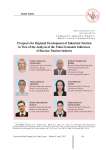
Статья научная
The development of tourism industry at the regional level is relevant for all the subjects of the Russian Federation. The issue is especially acute in those of them that do not have rich cultural-historical heritage and unique natural-climatic conditions. In particular, these areas include highly urbanized industrial regions of the country, which at present do not make an effective use of their potential for the development of domestic and inbound tourism. The subject of the research in this paper is tourist activity in federal districts of the Russian Federation. The purpose of the paper is to analyze the volume of tourist services in the Russian Federation and to substantiate the development of industrial tourism in the regions for the purpose of attracting additional tourist flows. The study uses the system approach, the basic scientific methods of analysis and synthesis, deduction and induction, and statistical analysis methods. One of the innovations in the tourism business of the Russian Federation could be the organization and conducting of excursions to the enterprises of the country not only for official delegations and business partners, but also for ordinary tourists...
Бесплатно
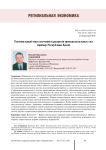
Статья научная
As an attempt to extract positive experience to overcome difficulties of an extraordinary nature, we tried to appeal to historic examples of active participation of science in solving problems of regional development due to the general national tasks. The paper deals with the experience of the Commission for Study of Natural Productive Forces under the Head of the Republic of Komi (1993-2004), which is of scientific interest regarding the use of the results of research works of strategic planning and project management, taking into account the extraordinary circumstances caused by the sharp transformation of Russia’s economic structure. The article shows that it happens in a more constructive way when researchers and practitioners are united organizationally within the framework of the “problem - program” methodology. The second line of analysis of such experience is to identify the correspondence between the scientific interpretation ofthe concept of“productive forces” and the content ofstate strategic planning documents. To return productive forces to the system “science - practice”, it is necessary to eliminate the substitution of this concept by resources and production and to select appropriate indicators of their measurement. The main subject of this dimension becomes “force”, which is presented as the force and result of natural processes, scientific and technological progress and new forms of production organization.
Бесплатно
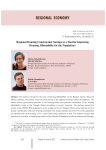
Статья научная
The article is devoted to the issue of housing affordability on the Russian market. Based on official statistics, the authors reveal the main trends of the regional housing market development. The article reviews government priorities in the housing policy and presents calculations of the housing affordability index in the Vologda Oblast according to several scenarios. The authors present the results of the ISEDT RAS population survey conducted in the Vologda Oblast concerning the level of people's satisfaction with their housing conditions. The results indicate that only 37% of the population are satisfied with their housing, 13% - rated their living conditions as bad. The authors research best practices of a number of constituent entities of the Russian Federation in order to address the shortage, quality and affordability of housing. Numerous studies by Russian scientists indicate the necessity of forming and introducing new tools and mechanisms to improve housing affordability in the Russian practice...
Бесплатно
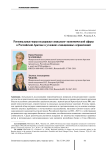
Статья научная
The importance of studying policy-making issues related to anti-sanctions legislation and practical measures to support the population and business at the level of Russia’s Arctic regions in the context of sanctions pressure is associated with the major role of the Arctic zone of the Russian Federation, which has geopolitical, strategic and socio-economic significance. The article provides a brief overview of the history of sanctions pressure and response measures based on a comparative analysis of foreign and Russian studies; we also conduct a content analysis of the anti-sanctions legislation in the Russian Arctic regions for 2022-2023 and current regional measures to support businesses and population to ensure socio-economic stability. Among the Arctic regions, the Komi and Sakha (Yakutia) republics are leaders in terms of the number of regulatory legal acts and the number of regional anti-sanctions measures, while the Nenets and Chukotka Autonomous areas are outsiders. The Krasnoyarsk Territory, the Yamal- Nenets Autonomous Area, the Republic of Karelia, the Arkhangelsk and Murmansk regions are Arctic territories that conduct quite moderate activities fulfilling the requirements of Presidential Decree 121, dated March 16, 2022. In this regard, it is necessary to continue to improve and update anti-sanctions legislation and anti-sanctions measures at the regional level in order to adjust the socio-economic sphere properly. It is necessary to study certain areas of regional support, for example taxation issues, more thoroughly. It is recommended that the authorities of the Arctic regions pay attention to regional taxes, which can play an important role in ensuring socio-economic stability. The content analysis also shows that there is no uniformity in policy-making activities at the level of the Russian Arctic regions, and a multidirectional practice of using state support measures to ensure socio-economic stability in the face of sanctions pressure is applied. Currently, it is necessary to streamline and balance the anti-sanctions legislation and measures it envisages at the level of the Russian Arctic regions.
Бесплатно
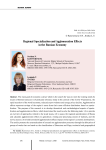
Regional specialization and agglomeration effects in the Russian economy
Статья научная
The main goal of economic science which is the search for ways to meet the existing needs by means of limited resources is of particular relevance today in the context of the Covid-19 pandemic, the rapid recession of the world economy, reduced export volumes and energy prices decline. Agglomeration effects represent savings of the region’s assets from their more efficient distribution based on specialization. The purpose of the research is to develop theoretical and methodological aspects of specialization and agglomeration effects, which determined the need to solve the following tasks: (1) to provide an overview of approaches related to the study issues, (2) to assess the regional specialization of Russia and calculate agglomeration effects in agriculture, mining and processing sectors of industry, and the service sector, (3) to build a model of agglomeration effects impact on the regions’ economic development. The article presents the systematization of research on agglomeration processes through the allocation of groups of works that are based on the classification of Duranton and Puga, territorial and geographical approaches, the study of related diversity, the use of the cross-sectional analysis results, sorting processes, and agglomeration economy analysis. The economic point of evaluating a region’s specialization is to identify the industries in which it has competitive advantages in order to attract targeted resources. The assessment of agglomeration effects in Russia has shown that not all regions fully realize the advantages of specialization. The constructed models allowed to determine that (1) labor remains the key factor of development in agricultural and industrial regions; (2) roads are not a significant infrastructure indicator of development; (3) agglomeration effects in agriculture and services do not provide the desired result of the per capita GRP increment; (4) the manufacturing sector development is still an important condition. The article proposes a model allowing the assessment of the impact of agglomeration factors and regional specialization, the results of which can become an information basis for the development of regulatory actions in regional management. The research can be valuable for both the researchers and decision-makers in the field of spatial development.
Бесплатно
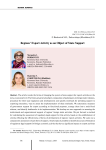
Regions’ export activity as an object of state support
Статья научная
The article reveals the forms of changing the system of state support for export activities at the meso-economic level. The forms are general (subject composition ofparticipants in foreign trade relations, procedure for their state regulation and development) and specific (methods for providing support to exporting enterprises, ways to assess the implementation of these methods). We systematize measures of government support for export according to functional purposes, arrange them into a multi-level scheme, and identify bottlenecks in its implementation. We develop our own approach to assessing the institutional and organizational support of regions’ foreign trade activities. We put forward a method for calculating the assessment of regulatory legal support for this activity, based on the establishment of criteria reflecting the effectiveness of forms of development of regions’ export activities. We carry out a comparative assessment of each form of support, which makes it possible to identify key areas of formation of regulatory legal support for foreign economic activity that have a significant impact on export activities in Russia’s regions. The application of the proposed method for managing the system of government support for export will help to address the most critical issues in the field of international cooperation and foreign trade relations. The system will help to create conditions for the development of export-oriented industries and enterprises, ensure greater availability of financial resources for organizations at all levels and an increase in export volumes through the formation of new mechanisms to support them. The implementation of the proposed measures will stimulate the production of goods in general, which will contribute to an increase in the added value of the regional economy, an increase in the tax base, foreign trade turnover and the number ofjobs, and create the most favorable conditions for the development of export activities in Russia’s constituent entities.
Бесплатно
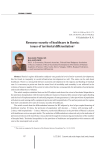
Resource security of healthcare in Russia: issues of territorial differentiation
Статья научная
Russia’s regions (federation subjects) vary greatly by level of socio-economic development; this fact leads to inequality in social infrastructure development as well. The same can be said about healthcare. There is a strong link between economic development in the regions and funding of medical care. It is necessary to point out that the actual level of morbidity and mortality is not reflected in the volumes of resource supply of the sector in terms of territories; consequently, the principles of social justice and social solidarity are violated. The article analyzes statistical data on the RF subjects and shows the extent of territorial disparities in the provision of population with the main healthcare resources: financial (the amount of per capita funding and the level of implementation of territorial programs of state guarantees), labor (provision of population with doctors and nursing staff), equipment (provision with hospital beds). The author points out the regions that show consistently low rates of resource security of healthcare...
Бесплатно
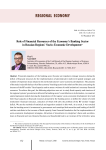
Статья научная
Financial capacities of the banking sector become an important strategic resource during the deficit of financial resources for the implementation of administrative multi-level spatial strategies and solution of important issues related to the territorial systems' socio-economic development. The purpose ofthestudyistojustifythekeyroleoftheeconomy'sbankingsectorinthesolutionoftheissueconcerningthe increase of the RF entities' fiscal capacity and to assess a volume of credit institutions' necessary financial resources. To achieve this goal, the following objectives were set: to study fiscal capacity and structure of the regional systems' government debt and the banking sector's contribution to its formation, to construct spatial regression models showing the dependence of the regions' socio-economic development level and their fiscal capacity on financial resources attracted by the banking sector, to define the volume of credit institutions' financial resources, attraction of which will solve the problem of the RF entities' budget deficit. We use the methods of statistical and regression analysis in this work. As a result, it was revealed that the banking sector's investments in government and municipal debt securities and lending of the RF entities contribute to the increase of fiscal capacity, form financial foundation for the implementation of socio-economic development strategies. Attraction of investments in enterprises' shares and securities, loans to financial and non-financial business and households lead to an increase of the territories' gross regional product. The results of this study may be useful for the government authorities of the RF entities while implementing the developed spatial socio-economic development strategies.
Бесплатно
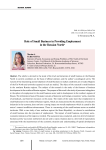
Role of small business in providing employment in the Russian north
Статья научная
The article is devoted to the study of the level and dynamics of small business in the Russian North in current conditions on the basis of official statistics and the author's sociological survey. The reasons of the functioning and development of small business in market conditions are revealed. Regions of the Far North and territories equated to such are studied. The object of the research is small business in the northern Russian regions. The subject of the research is the study of the features of business development in the northern Russian regions. The purpose of this work is the study of processes taking place in the sphere of employment in the small business sector and its development in the northern regions of Russia. The information basis of this paper consists of domestic and foreign economists' works, materials of periodicals, and Internet resources on this topic. The results of the study show that employment in small businesses in the northern Russian regions, which are characterized by the dominance of extractive industries in the economy, does not have a strong impact on overall employment which is caused by this sector's current insufficient advancement. There is a narrowing of the small business sector on studied territories. With a case study of one northern region (the Komi Republic), we showed a contribution of small business into the provision of employment. The impact of small business on primary socio-economic indicators of the region is revealed. The assessment was conducted, and a low level of residents' business activity was noted: northerners do not seek to open a business due to a low level of expectations associated with the improvement of the economic situation and understanding of spatial development problems on the territory of residence. The main reasons of northerners' low business activity are the lack of entrepreneurial skills, the lack of start-up capital and difficulties with its attraction. The key directions of the increase of employment in the small business sphere of the northern regions are highlighted.
Бесплатно
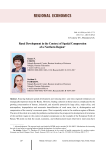
Rural Development in the Context of Spatial Compression of a Northern Region
Статья научная
Ensuring balanced spatial development and reducing inter- and intra-regional imbalances are strategically important issues for Russia. However, finding a solution to these issues is complicated by the growing concentration of human, industrial, and scientific potential in large cities, major cities, and metropolises, depopulation and economic desertification of rural areas, that is, disintegration and compression of the country’s economic space. This is especially acute in the northern regions of Russia. The aim of the article is to study the problems and determine the prospects for development of rural areas of the northern region in the context of spatial compression on the example of the European North of Russia. We point out that the social, economic, and infrastructural issues observed in rural areas have remained unresolved since the 1990s. Rural population decline caused by the destruction of the socioeconomic potential of these territories is a key factor in the compression of the space of the northern region, degradation of the village and loss of its human capital. The reason lies not only in the shock transition to the market in the 1990s, but also in the ineffective state policy for rural development in the post-reform period, and in the absence of a strategic vision of the place of rural territories in the national space. Having analyzed the current state of the rural periphery and taking into account the need to shift to neo-endogenous rural development, we identify three priorities of state policy in the field of rural development in the North of Russia. They are as follows: development of the rural economy, modernization of rural infrastructure, and comprehensive development of human capital as the ultimate goal of all economic and social transformations. The findings of our work contribute to the formation of ideas about trends in spatial development of the northern regions of Russia and socio-economic issues of rural areas; they can be used by researchers in their studies on similar topics, and by public authorities when they need to work out strategic documents in the field of spatial development.
Бесплатно
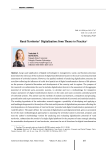
Rural territories' digitalization: from theory to practice
Статья научная
Large-scale application of digital technologies in management, social, and business processes determines the relevance of the inclusion of digital transformation factors in the socio-economic potential assessment of territorial systems. However, the applied methods of analyzing digitalization processes do not allow reflecting the influence of multi-level spatial set of digital transformation factors of life spheres on the process of potential formation and development of the country and its regions. The purpose of the research is to substantiate the need to include digitalization factors in the assessment of the aggregate potential of territorial socio-economic systems, to develop and test a methodology for integrative impact assessment of digital transformation factors on the state and socio-economic potential growth of territorial systems. The author uses the methods of analysis and synthesis, comparison and grouping, generalization and expert assessments, index and correlation methods of economic and statistical analysis. The working hypothesis of the undertaken research suggests a possibility of developing and applying a methodological approach to the analysis of the state and dynamics of digitalization processes reflecting the interdependence of characteristics of rural territories' potential and digital transformation parameters of rural life sphere. The paper defines the concepts of digitalization and digital potential, gives an annotated list of the main methodological approaches to assessing the territorial system's potential, proposes and tests the author's methodology version for analyzing and evaluating digitalization potential of rural territories, substantiates the model of a single digital platform for the purposes of state strategic planning for sustainable development of rural territories, structures the set of directions for digital transformation of region's life subjects, and forms a multi-level set of indicators for comparable assessment of the state and dynamics of digital transformation development which is useful for developing options for setting priorities when justifying strategic decisions in digitalization. The scientific novelty of the research is that for the first time there was an attempt to develop a methodological approach to assessing territorial system potential taking into account the factors of digital transformation of processes in the field of production, exchange, distribution, and consumption of public products.
Бесплатно

